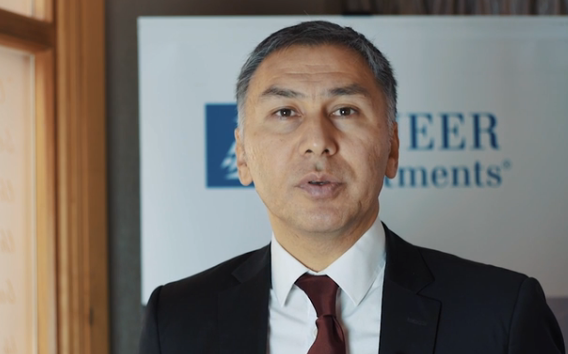Yerlan Syzdykov, head of fixed income and high yield strategies for emerging markets at Pioneer Investments, explains in this interview his vision for emerging debt in the coming year and the reasons why his team rather invest in Asia over Latin America.
What is your outlook for Emerging Markets Debt for 2017?
We are forecasting a pickup in growth in Emerging Markets in 2017. However, of course, the outlook from the returns perspective could be influenced by what’s happening in the U.S., given that interest rates have started to move upwards and that could really add pressure in terms of real returns. So, we think we are looking at low positive returns from emerging markets, and we believe that we are probably going to see flat performance in terms of local currency.
Within Emerging Markets Debt, will Government or Credit market be more interesting next year?
They are going to be broadly the same in terms of performance, by our estimates. We still have a preference for government debt next year. We believe that there is a little bit of inertia in terms of growth that will still put pressure on corporates. Higher refinancing rates are probably something that we need to be aware of in 2017 and 2018. So, we are looking at the higher default rates that we are forecasting for corporates compared to sovereigns and therefore, our preference is with sovereign debt.
How does the outcome of the U.S. elections affect Emerging Markets Debt?
We are all used to watching the monetary policy of the U.S. as it so important for us. Now, we are starting to see a shift in fiscal policy, in foreign policy and potentially also in trade policy. That could potentially have a negative impact on emerging markets in the long run. However, of course, we need to see how urgent those changes could be and what shape they will take. So, overall, we are going to be monitoring those changes and readjusting our positioning accordingly.
What regions could provide the most interesting opportunities in 2017?
We still see the opportunity to grow in Asia given the structural reforms that we have seen in countries like India and even in China, which are still supporting a good growth story. We are seeing more volatility in Latin America as we are witnessing the impact of lower commodity prices potentially, especially in metals (at least initially). We are also looking very carefully at the negative credit re-rating cycle in Eastern European markets, which would also be affected by political volatility in Europe itself. Therefore, we prefer Asia.
What’s your view on China’s economy and leverage levels?
We have seen some investors getting worried given the 20% growth in leverage levels just to sustain that level of growth. We are looking for some more structural reforms, especially in state-owned enterprises (SOEs), something that has not really happened yet, and we are probably going to see a bit of a slowdown in that structural reform drive given that the beginning of the political succession in China. So, therefore, Chinese growth may underperform somewhat, but we still see a very healthy and more stable overall picture compared to other spaces in Emerging Markets.
What is your view on EM currencies?
Although we see a pickup in growth in the emerging world, the differential between emerging markets and developed markets is still shrinking, especially if we are looking at the prospect of higher U.S. growth next year and lower productivity growth in the emerging world going forward. That means that currencies are probably not going to be appreciating strongly against the U.S. dollar – we are moving into a strong dollar world if the reforms in the U.S. are going to take place. Therefore, there is probably going to be a little bit of upside in dollar versus emerging currencies so we will be very cautiously positioned in local currencies this year.

